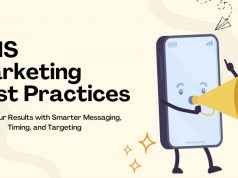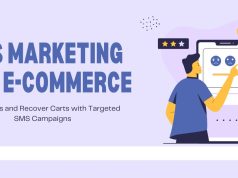SMS marketing might seem like a relic from the early 2000s, but it’s experiencing a renaissance. With open rates hovering around 98% and response rates that dwarf email marketing, text message campaigns are proving their worth for businesses of all sizes.
But here’s the catch: SMS marketing isn’t as simple as sending a mass text to your customer list. There are legal requirements, platform considerations, and strategic decisions that can make or break your campaign. This guide will walk you through everything you need to know about how to start SMS marketing, from choosing the right platform to crafting messages that actually convert.
Understanding SMS Marketing Basics
SMS marketing involves sending promotional messages, alerts, or updates directly to customers’ mobile phones via text messages. Unlike email, which can sit unread in an inbox for days, text messages are typically read within minutes of delivery.
The power of SMS lies in its immediacy and personal nature. When someone receives a text, they’re likely to check it regardless of what they’re doing. This makes SMS an incredibly effective channel for time-sensitive offers, appointment reminders, and urgent communications.
However, SMS marketing operates under strict regulations. The Telephone Consumer Protection Act (TCPA) in the United States requires businesses to obtain explicit consent before sending marketing messages. This means you can’t simply purchase a list of phone numbers and start texting—you need permission first.
Choosing Your SMS Marketing Platform
Your choice of SMS marketing platform will significantly impact your campaign’s success. The right platform should offer robust features while remaining user-friendly and compliant with regulations.

Key Features to Look For
When evaluating SMS platforms, prioritize these essential features:
Automation capabilities allow you to set up triggered messages based on customer actions or dates. For example, you can automatically send a welcome message when someone joins your list or remind customers about abandoned carts.
Integration options ensure your SMS platform works seamlessly with your existing tools. Look for platforms that connect with your e-commerce system, CRM, or email marketing software.
Analytics and reporting help you track performance metrics like delivery rates, open rates, and conversions. Without proper analytics, you’re flying blind.
Compliance tools automatically handle opt-out requests and maintain records of consent. This protects you from legal issues and maintains customer trust.
Popular SMS Marketing Platforms
Several platforms dominate the SMS marketing landscape, each with unique strengths:

Klaviyo excels at e-commerce integration and offers sophisticated segmentation tools. It’s particularly strong for online retailers who want to coordinate SMS and email campaigns.
Twilio provides a developer-friendly platform with extensive customization options. It’s ideal for businesses with technical resources who want to build custom solutions.
SimpleTexting offers an intuitive interface perfect for small businesses getting started with SMS marketing. Its drag-and-drop campaign builder makes creating messages straightforward.
Attentive specializes in advanced personalization and AI-driven message optimization. It’s worth considering for larger businesses with substantial SMS marketing budgets.
Building Your SMS Subscriber List
Your subscriber list is the foundation of successful SMS marketing. Unlike email, where people might subscribe with secondary addresses, SMS subscribers are giving you access to their primary communication device.
Ethical List Building Strategies
Opt-in forms should be prominently placed on your website, particularly on high-traffic pages like your homepage and checkout process. Make the value proposition clear—what will subscribers receive in return for their phone number?
In-store signage can drive SMS subscriptions from physical locations. QR codes linking to opt-in forms make it easy for customers to join your list on the spot.
Social media promotion can introduce your SMS program to existing followers. Share examples of the exclusive content or discounts subscribers receive.
Email cross-promotion leverages your existing email list to grow SMS subscribers. However, don’t automatically enroll email subscribers—always require separate consent for SMS.
Incentivizing Subscriptions
People need compelling reasons to share their phone numbers. Effective incentives include:
Exclusive discounts that aren’t available through other channels create genuine value for SMS subscribers.
Early access to sales or new products makes subscribers feel like VIPs.
Useful content such as tips, recipes, or how-to guides provides ongoing value beyond promotional messages.
Contest entries can drive short-term subscription growth, though be prepared for higher unsubscribe rates after the contest ends.
Crafting Effective SMS Messages
SMS messages have a 160-character limit, making every word count. Effective SMS marketing requires distilling your message to its essence while maintaining impact and clarity.
Message Structure and Tone
Start with a clear value proposition. Your opening words should immediately communicate what’s in it for the recipient. Whether it’s a discount, important information, or an exclusive offer, lead with the benefit.
Use conversational language that matches your brand voice. SMS feels personal, so overly formal language can seem out of place. However, maintain professionalism—you’re still representing your business.
Include a clear call-to-action that tells recipients exactly what to do next. Whether it’s “Shop now,” “Call today,” or “Reply STOP to opt out,” make your desired action obvious.
Timing and Frequency
Timing significantly impacts SMS performance. Generally, messages sent between 10 AM and 8 PM perform better than those sent outside these hours. However, your specific audience may have different preferences based on their demographics and time zones.
Frequency requires careful balance. Too few messages and subscribers forget about you. Too many and they’ll unsubscribe. Start with one message per week and adjust based on engagement rates and feedback.
Consider your audience’s schedule when planning sends. B2B messages might perform better during business hours, while consumer-focused messages could see higher engagement during evenings and weekends.
Legal Compliance and Best Practices
SMS marketing regulations exist to protect consumers from spam and unwanted messages. Violating these rules can result in hefty fines and damage to your brand reputation.
TCPA Compliance Requirements
Express written consent is mandatory before sending marketing messages. This means recipients must actively agree to receive texts, not just fail to opt out.
Clear identification requires messages to identify your business. Recipients should always know who’s texting them.
Opt-out mechanisms must be included in every message. The standard “Reply STOP to opt out” language satisfies this requirement.
Record keeping helps protect your business if compliance questions arise. Maintain records of when and how subscribers opted in.
International Considerations
If you’re marketing internationally, research local regulations. The European Union’s GDPR, Canada’s CASL, and other regional laws may impose additional requirements on your SMS marketing activities.
Measuring SMS Marketing Success
Tracking the right metrics helps you understand your campaign performance and identify improvement opportunities.
Key Performance Indicators
Delivery rate measures what percentage of messages successfully reach recipients. Low delivery rates might indicate issues with your subscriber list quality or platform.
Open rate for SMS is typically much higher than email, often exceeding 95%. If your open rates are significantly lower, investigate potential deliverability issues.
Click-through rate tracks how many recipients click links in your messages. This metric directly relates to engagement and interest in your offers.
Conversion rate measures how many recipients take your desired action, whether that’s making a purchase, booking an appointment, or downloading content.
Unsubscribe rate indicates whether your message frequency, timing, or content needs adjustment. High unsubscribe rates suggest you’re not meeting subscriber expectations.
A/B Testing Strategies
Test different message elements to optimize performance:
Send times can significantly impact engagement. Test messages sent at different times and days to find your audience’s preferences.
Message length affects readability and impact. Try both concise and detailed messages to see which style resonates better.
Call-to-action wording influences conversion rates. Test different phrases to find the most compelling language for your audience.
Personalization levels range from using names to referencing past purchases. Experiment with different personalization approaches to find the sweet spot.
Your Next Steps to SMS Marketing Success
Starting SMS marketing doesn’t have to be overwhelming. Begin by selecting a platform that fits your budget and technical requirements. Focus on building a quality subscriber list through ethical opt-in methods, and create messages that provide genuine value to your audience.
Remember that SMS marketing is a marathon, not a sprint. Success comes from consistently delivering valuable content while respecting your subscribers’ preferences and privacy. As you gain experience, you’ll develop a better understanding of what resonates with your specific audience.
Start small, test frequently, and scale gradually. Your first SMS campaign might not be perfect, but it’s the foundation for future success. The key is to begin—your competitors might already be reaching your customers through their text messages.
For a well-rounded mobile strategy, it’s useful to know how to start SMS marketing with a step-by-step approach, while also exploring the definitive guide to mobile content marketing to engage audiences more effectively across platforms.









